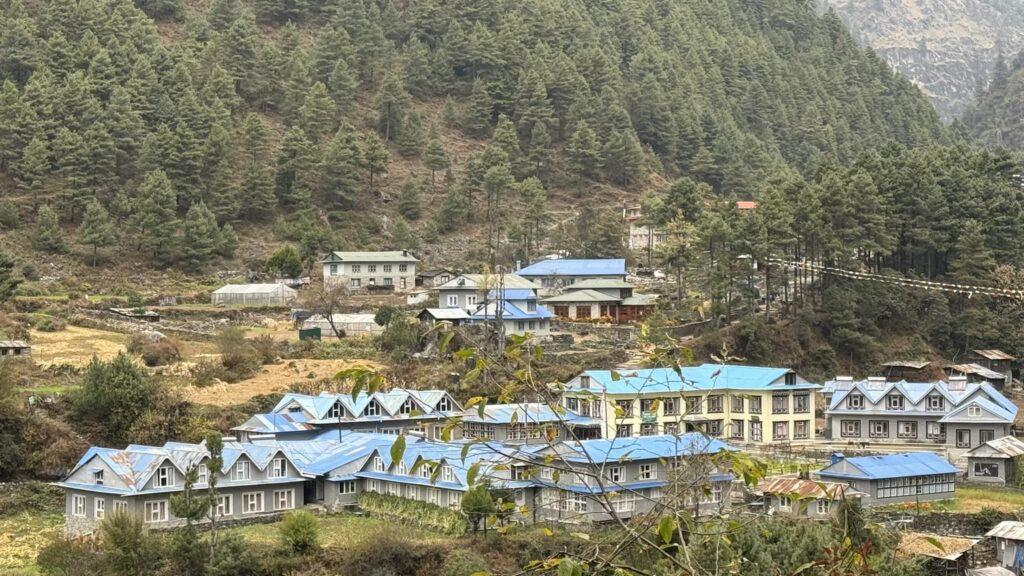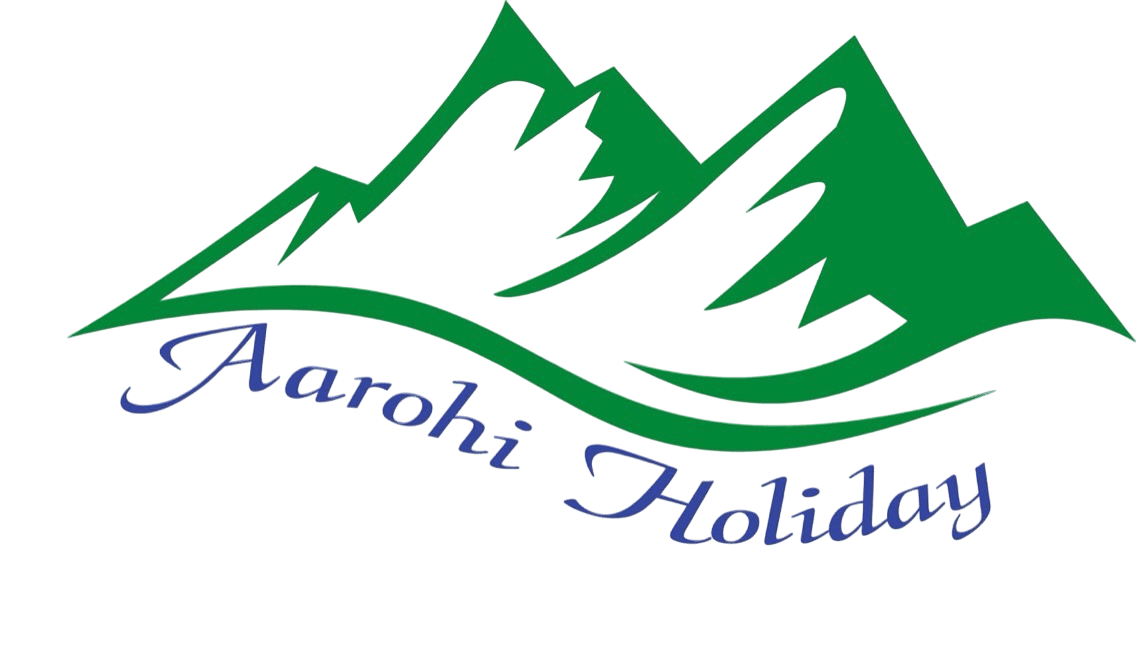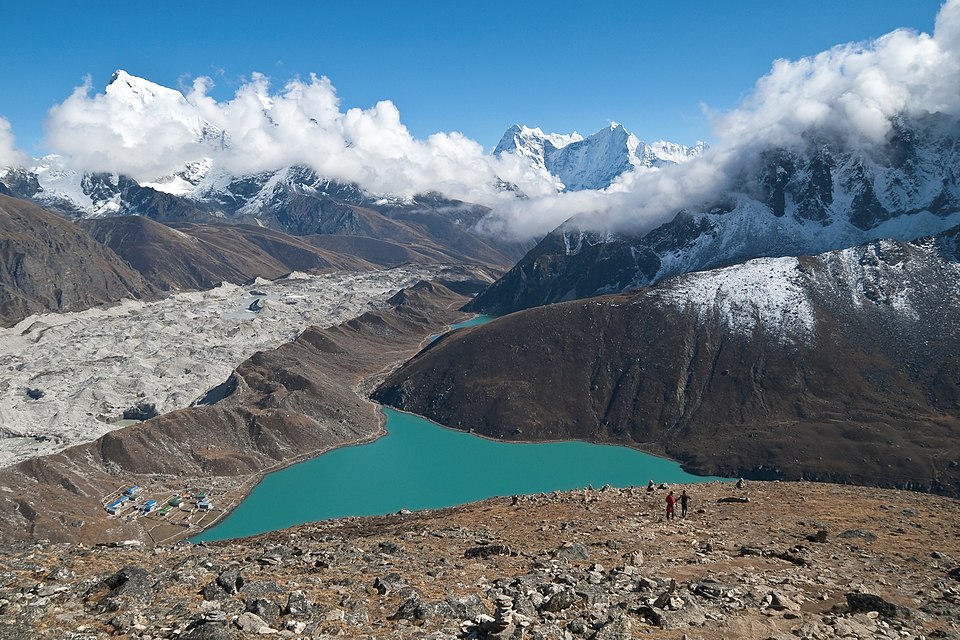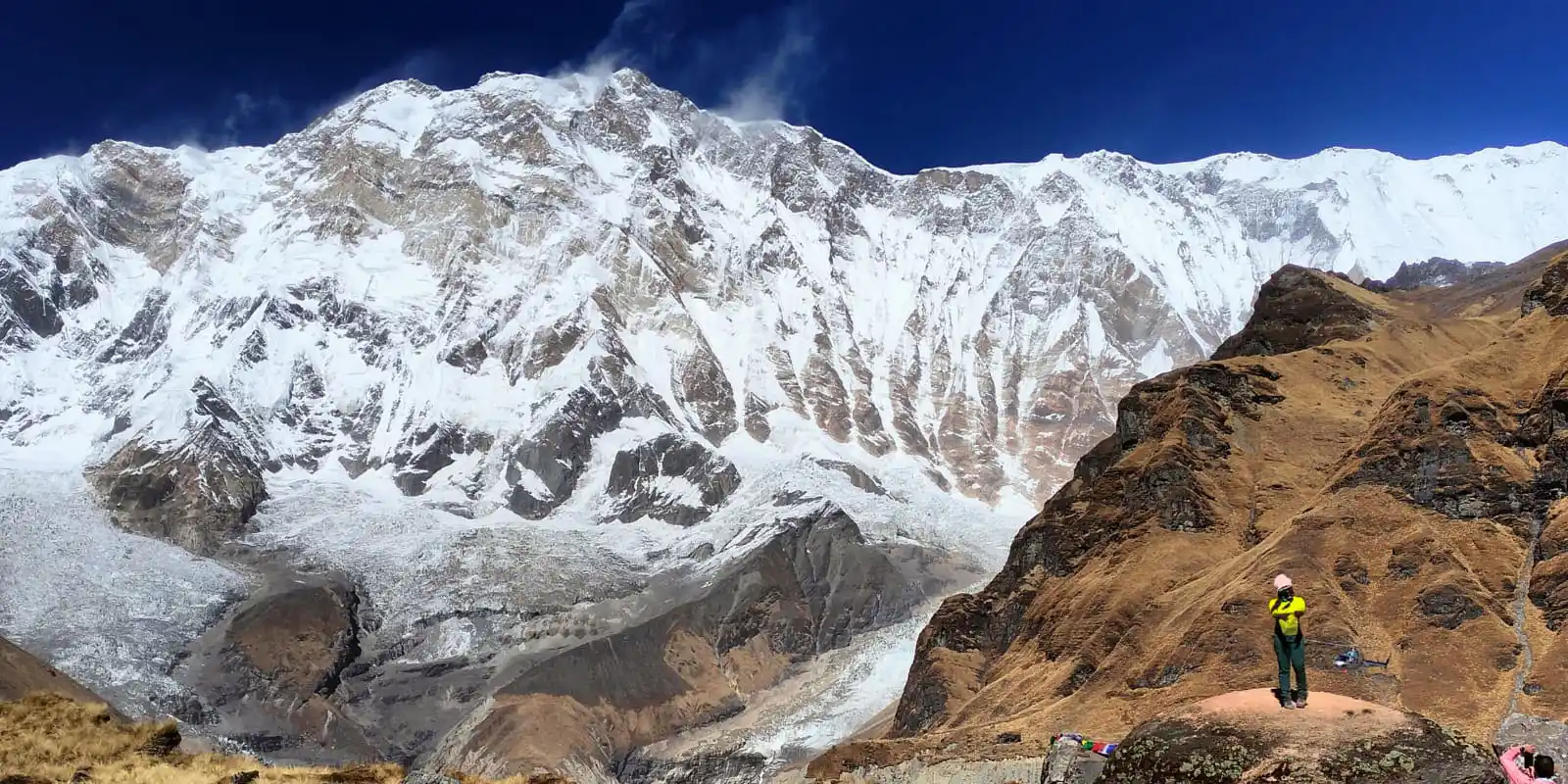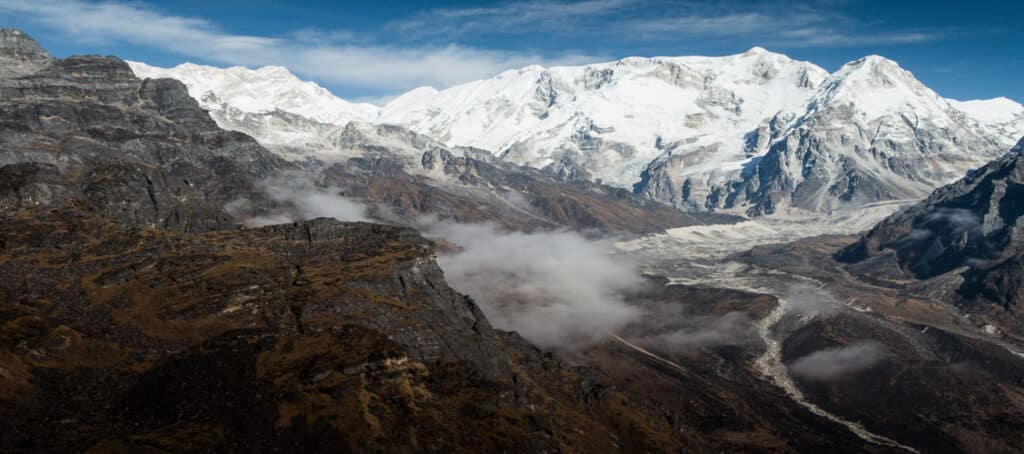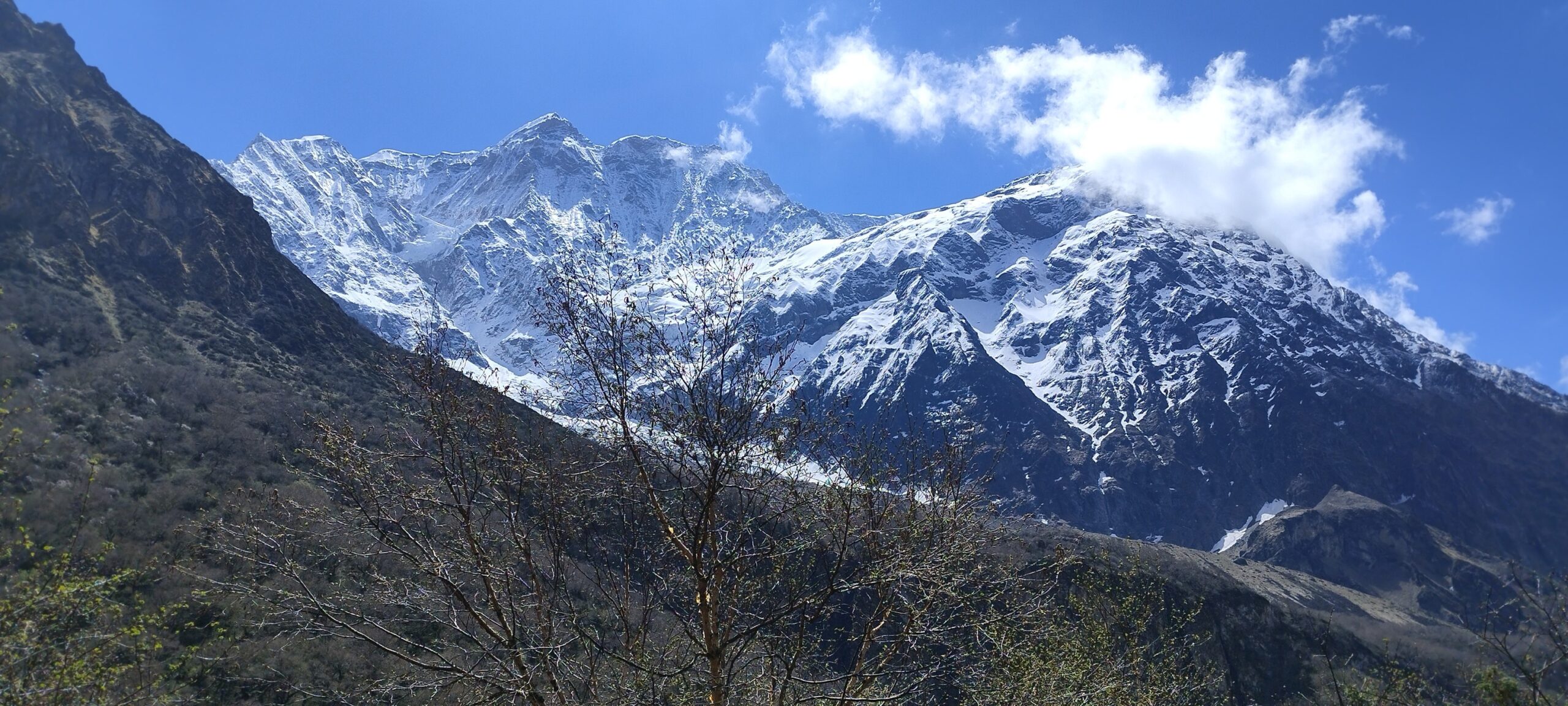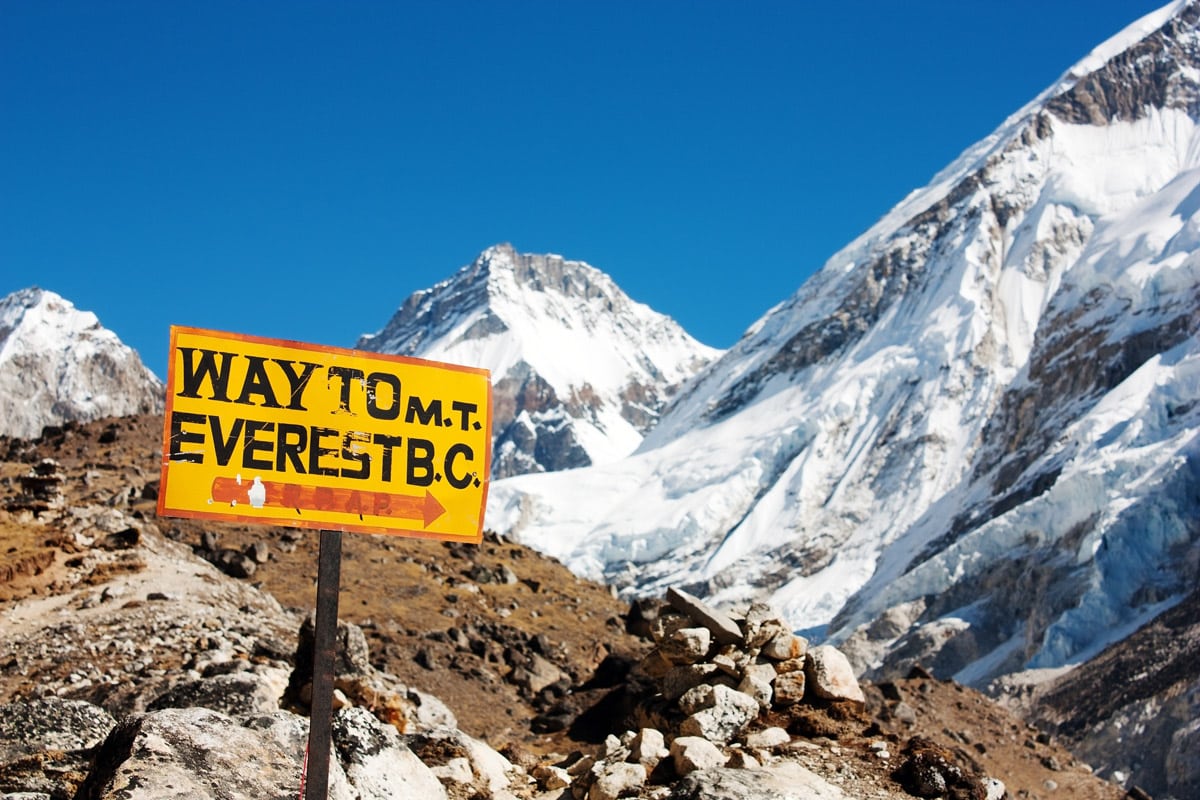Accommodation during Gokyo Valley Trek
- In Kathmandu we provide comfortable accommodation in 3-star hotels with breakfast on a twin-sharing basis.(Private room accommodation can be organized at an extra cost)
- During the trek, we provide comfortable teahouse accommodation on a twin-sharing basis. Hot showers, Wi-Fi, and device charging are available at an additional cost.
Meals and Drinking water on Gokyo Valley Trek
Throughout the Gokyo Valley Trek, you’ll enjoy three wholesome meals a day—breakfast, lunch, and dinner—served at cozy teahouses along the trail. Menus feature a mix of local Nepali dishes and familiar international options, including dal bhat, fried rice, noodles, soups, pasta, pancakes, and eggs. While lower-altitude villages offer more variety, menus in higher and more remote areas like Gokyo become simpler but remain hearty and nourishing, providing the energy you need for long trekking days and high-altitude climbs.
Clean drinking water is essential for a safe and enjoyable trek. Bottled water is available at most teahouses, but to reduce environmental impact, we recommend carrying a reusable water bottle or hydration bladder. Our guides supply water purification tablets or drops, allowing you to safely refill from natural sources along the route. Staying well-fed and hydrated is key to keeping your energy levels up and aiding proper acclimatization during your Gokyo Valley adventure.
Required Permits for the Gokyo Valley Trek
For the Gokyo Valley Trek, you’ll need a TIMS Card and a Sagarmatha National Park Permitand Khumbu Pasang Lhamu Rural Municipality Permit,but no worries, we’ve got it covered. All permit fees are included, and we’ll handle the paperwork so you can focus on the adventure.
- Sagarmatha National Park Entry Permit: NPR 3,000 per person.
- Khumbu Pasang Lhamu Rural Municipality Permit: NPR 2,000 per person.
- TIMS Card cost: NPR 1000 per person.
Best Time for Gokyo Valley Trek
The best time for the Gokyo Valley Trek is during autumn (September to November) and spring (March to May). These seasons offer stable weather, clear skies, and stunning views of the Himalayan peaks and turquoise Gokyo Lakes. Autumn provides crisp air and vibrant fall colors, while spring brings blossoming rhododendrons and comfortable temperatures, making it perfect for trekking and photography.
Winter (December to February) is colder, especially at higher elevations, with snow making some trails more difficult but offering a peaceful and less crowded experience. The monsoon season (June to August) is generally not recommended due to heavy rain, slippery paths, leeches, and reduced visibility, which can impact both safety and enjoyment of the trek.
Gokyo Lake Trek Difficulties
The Gokyo Lake Trek presents moderate to challenging difficulties due to its high-altitude terrain and steep trails. Trekkers will face long hiking days ranging from 5 to 8 hours, with some sections involving steep ascents and descents, especially around Gokyo Ri (5,357m), which requires a strenuous climb for panoramic views. The trails can be rocky, slippery, and uneven, particularly after rain or snow.
Altitude sickness is a concern as the trek reaches elevations above 5,000 meters, so proper acclimatization is vital with rest days included at key points like Namche Bazaar and Gokyo. Weather conditions can change rapidly, with cold temperatures and strong winds at higher altitudes. Good physical fitness, mental resilience, and guidance from experienced local guides are essential to safely enjoy the breathtaking scenery and unique experience of the Gokyo Lake Trek.
Altitude Sickness and Prevention on the Gokyo Valley Trek
At Aarohi Holiday, your safety is our top priority, especially on high-altitude treks like the Gokyo Valley Trek. As the trek reaches elevations above 5,000 meters at Gokyo Ri, altitude acclimatization is essential to prevent Acute Mountain Sickness (AMS). Our experienced guides are trained to recognize early symptoms such as headache, dizziness, nausea, and fatigue, and are equipped with first aid and emergency response skills.
To minimize the risk of AMS, we follow a well-structured itinerary that includes rest and acclimatization days at key stops like Namche Bazaar and Gokyo. We maintain a slow and steady trekking pace to help your body adapt gradually to the altitude. Should any serious symptoms arise, our team is prepared to assist with a safe descent or arrange emergency evacuation if necessary. With expert guidance and strict safety measures, you can enjoy the breathtaking Gokyo Valley trek with confidence and peace of mind.
Travel Insurance for Gokyo Valley Trek
Aarohi Holiday strongly recommends that all trekkers obtain comprehensive travel and medical insurance before embarking on the Gokyo Valley Trek. This high-altitude trek reaches elevations above 5,300 meters and passes through remote regions where access to medical facilities is limited.
Your insurance should explicitly cover high-altitude trekking up to at least 5,500 meters and include emergency helicopter evacuation, medical treatment, accidents, and personal injury. It is also wise to include coverage for trip cancellations, delays, lost baggage, and other unexpected incidents.
With proper insurance and the support of our experienced team, you can fully enjoy the stunning beauty of the Gokyo Valley Trek with peace of mind, knowing you are well protected throughout your journey.
Gokyo Valley Trek Itinerary
The Gokyo Valley Trek offers an incredible journey through the stunning landscapes of the Everest region, combining serene turquoise lakes, traditional Sherpa villages, and breathtaking Himalayan panoramas. Your adventure begins in Kathmandu with a day dedicated to exploring the rich culture and heritage of the valley before a morning flight to Lukla, the gateway to the trek.
From Lukla, you’ll trek through beautiful forested trails to Phakding and then ascend to the bustling Sherpa town of Namche Bazaar, where an acclimatization day helps your body adjust to the altitude. The route continues to the spiritual Tengboche Monastery and then up to Dingboche, with another acclimatization day to prepare for higher elevations. You’ll push on to Lobuche before reaching Gorak Shep, from where you can take an exciting day hike to Everest Base Camp.
The next day, an early morning climb to Kala Patthar rewards you with panoramic views of Everest and the surrounding peaks. After descending to Gorak Shep, you’ll take a helicopter flight back to Kathmandu, marking the end of your unforgettable trek through the majestic Gokyo Valley.
Gokyo Valley Trek Cost
The cost of the Gokyo Valley Trek varies depending on the trekking season, group size, and level of services you choose. Our all-inclusive 12-day package is priced at USD 1,350 per person, covering everything from your arrival in Kathmandu to your final departure. This includes guided trekking, domestic flights, accommodations, meals during the trek, necessary permits, and more—providing you with a hassle-free and safe trekking experience in the breathtaking Gokyo Valley.
This pricing is based on solo travelers, but we offer group discounts ranging from 5% to 10%, and group leaders can often join the trek free of charge. At Aarohi Holiday, we ensure transparent pricing with no hidden fees, giving you excellent value for this incredible journey through the heart of the Everest region.
Important Notes for Gokyo Valley Trek
- In high season, Lukla flights operate from Ramechhap, about 5–6 hours’ drive from Kathmandu. In low season, flights are usually from Kathmandu. We arrange all transfers as needed.
- This itinerary includes travel by shared bus to Ramechhap. If you prefer a private jeep, please let us know—we’ll be happy to provide the additional cost.
- Porters can carry up to 20kg, but we recommend packing under 10kg since we provide one porter per two trekkers. A duffle bag for your gear will be provided.
- Meals are included on the trek, but extra charges apply for hot showers and charging devices at teahouses/lodges.
- Meals and entry fees for sightseeing in Kathmandu are not included.
- Drones require hard-to-get permits, so it’s best not to bring.
Flight to Lukla
Flights to Lukla operate from either Kathmandu or Ramechhap, depending on the season. If flying from Ramechhap, it’s about a 5–6 hour drive from Kathmandu, followed by a 30–40 minute flight to Lukla. Himalayan weather can be unpredictable, with fog or strong winds sometimes causing delays or cancellations. Early morning flights have the highest chance of being on time. We arrange all transfers and keep you updated on any changes. Helicopter charters are also available at an additional cost.
Fitness Preparation for the Trek
The Gokyo Valley Trek is a moderately challenging high-altitude trek that requires good fitness and endurance. With trekking days averaging 5 to 8 hours and elevations reaching above 5,300 meters, you’ll encounter steep ascents, uneven terrain, and variable weather conditions. Preparing with regular cardiovascular exercises such as hiking, jogging, cycling, or swimming, alongside strength training and stamina-building workouts, will enhance your endurance and overall trekking experience.
Proper physical conditioning will help you enjoy the trek with greater ease and reduce the risk of fatigue or injury. With the right preparation and support from our experienced guides, most healthy trekkers can comfortably complete this rewarding journey through the stunning Gokyo Valley.
A Typical Day on the Trail
Each day on the Gokyo Valley Trek involves 5 to 8 hours of trekking through diverse and scenic terrain. After a nourishing breakfast, you’ll set off on trails winding through charming Sherpa villages, rhododendron forests, and alongside sparkling turquoise lakes. The trek features steady ascents and descents on rocky and sometimes slippery paths, with elevations reaching above 5,300 meters at Gokyo Ri.
Regular breaks and a midday lunch provide opportunities to rest and refuel while enjoying stunning views of the Himalayas, including Everest, Cho Oyu, and the surrounding peaks. Your knowledgeable guides maintain a comfortable pace to help with acclimatization and ensure your safety, making each day a balanced mix of adventure and relaxation.
Arrival Instruction
Upon your arrival at Tribhuvan International Airport, our company representatives are stationed to welcome you to the country. We request you to carefully look for your name being held by our representatives following the events upon landing. The representatives are responsible to escort you to your hotel in Kathmandu. You will see men offering you to carry luggage and take you to your destination as you exit the airport. We request you pay no attention to these people and follow the designated representatives and follow their instructions. You will also need to keep an eye on your luggage and belongings to avoid any complications.
Nepal Visa Entry Procedure
For entry into Nepal, there are visa requirements everyone (except Indian nationals) must complete before being allowed to pass through immigration. This is for air travel as well as overland transportation. Most visitors may obtain a visa to enter Nepal, however, there are exceptions. Three options are available for entry
- 15-day single entry: US $30
- 30-day single entry: US $50
- 90-day multiple entries: US $125
Please have a passport valid for at least 6 months from the time of entry, and have cash ready, preferably in US dollars, though there are other currencies Nepal Immigration accepts. If you are entering via overland, you must have US cash and 3 passport photos. For arrival by air, the kiosks at the airport take your picture for you. For the most up to date list of exceptions for visa on arrival or to obtain the most current visa information, visit the Nepal Department of Immigration website.
